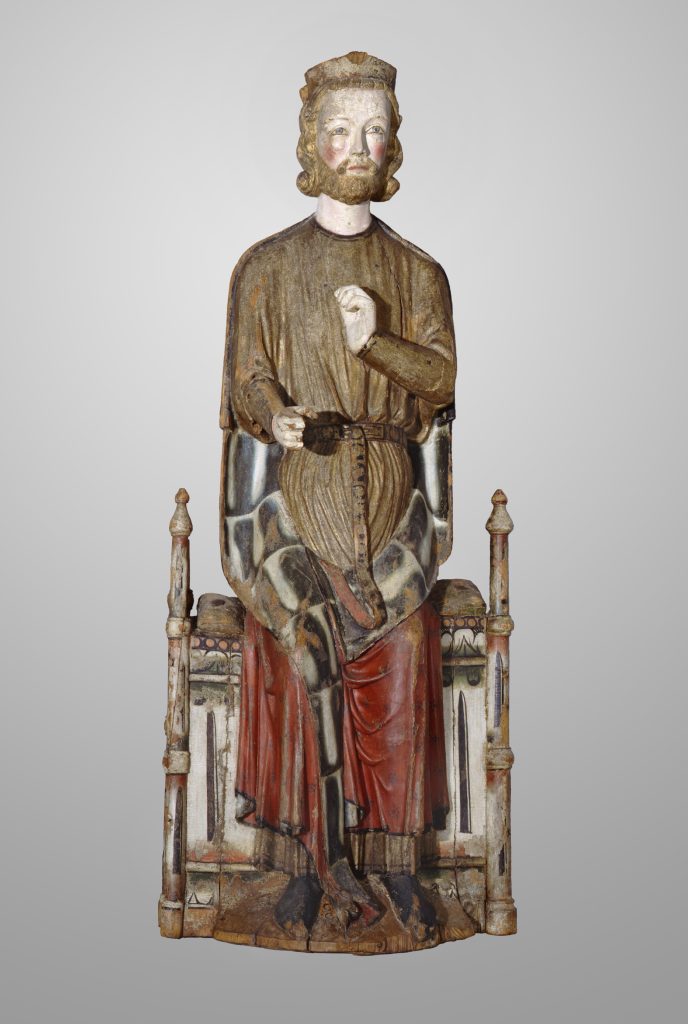In this life-sized sculpture, the King, St Olav, is seated on an architecturally shaped throne with corner posts and a cushion on top, painted in ‘dual shading’. He wears a fastened, imitation-golden robe that falls to his ankles, and an opened red mantle lined with imitation fur. He has a young, bearded face and half-long wavy golden hair; his crown is now missing. The right arm projects forward and, in his hand, he originally held an axe as attribute. His left arm is raised before his chest in a gesture of blessing. The only surviving St Olav sculpture of comparable size originated from Tyldal (Hedmark) and is now kept in the Nationalmuseum in Copenhagen (1230-1250, inv. no. 10364).

The stretched torso of the sculpture is similar to the St Olav figures from Seim (MA 427) and Fresvik (Oslo, Kulturhistorisk museum, on permanent loan from the Nordiska museet in Stockholm, inv. no. 17797). Aron Andersson observed English stylistic impulses in all three sculptures and compared the St Olav from Dale with figures on the façades of Lincoln and Wells Cathedrals. The sculpture from Dale probably stood on one of the three altars in the richly furnished stone church, the vestiges of which came to light during archaeological excavations. The side altars were covered by wooden baldachins and the chancel was fitted out with wall paintings, parts of which survived under a new layer added after the Reformation.
The limited depth (39 cm) of the figure in relation to its height may indicate that it was equipped with a back panel (dossal) or stood inside a tabernacle shrine. From the same church, a painted altar frontal is also preserved (MA 5). Around 1900, Bendix Bendixen also mentioned the presence of a fragmented and now lost female saint in Dale, possibly representing the Virgin Mary, that would have shared similarities with this St Olav figure.
Norway, 1260-1270
From Dale i Luster (Sogn), in the museum before 1837
Pinewood, polychromed
H 151 x W 41 x D 39 cm
Inv. no. MA 49